Address
304 North Cardinal
St. Dorchester Center, MA 02124
Work Hours
Monday to Friday: 7AM - 7PM
Weekend: 10AM - 5PM
Address
304 North Cardinal
St. Dorchester Center, MA 02124
Work Hours
Monday to Friday: 7AM - 7PM
Weekend: 10AM - 5PM
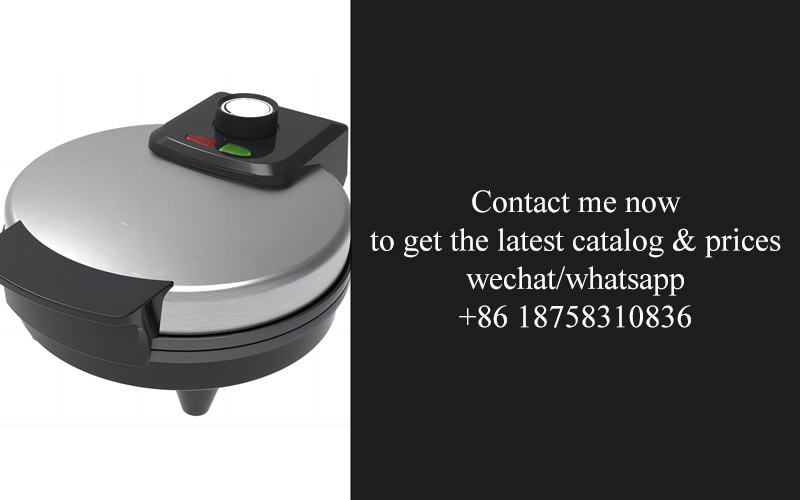
In the quest for healthier eating habits, many home cooks are turning to non-toxic appliances that enhance both the taste and safety of their meals. Among these, the non-Teflon waffle iron has emerged as a favorite for its ability to create delicious waffles without the potential risks associated with traditional non-stick coatings. Let’s delve into why this modern twist on the classic waffle iron is a game-changer for health-conscious bakers.
The waffle iron, a kitchen staple that brings smiles to faces and a delightful crunch to breakfast tables, has a rich and fascinating history. Originating in the 16th century, the waffle iron has evolved from a simple tool to a cherished appliance in many homes.
It all began in Belgium, where the first known waffle irons were crafted. These early models were made of cast iron and were used to cook waffles over an open flame. The design was simple yet effective, with two hinged plates that pressed the batter into a grid pattern. The process was labor-intensive, requiring skilled craftsmanship and patience.
As the 17th century rolled in, waffle irons became more popular across Europe, particularly in France and the Netherlands. The Belgians, however, were credited with perfecting the art of waffle-making. They introduced the waffle to the world at the 1964 World’s Fair in New York, where it became an instant hit.
The waffle iron itself continued to evolve. By the 18th century, the irons were being made from various materials, including copper, which was prized for its even heat distribution. The designs also became more intricate, with patterns that ranged from simple squares to ornate floral motifs.
The 19th century saw the waffle iron become a common household item in the United States. Immigrants from Belgium and France brought their waffle-making traditions with them, and the irons began to be mass-produced. This era also marked the introduction of the “Belgian” waffle, which is the type we’re familiar with today, featuring its distinctive large, deep pockets.
The 20th century brought further advancements. The electric waffle iron was introduced, making the process of making waffles much quicker and easier. This innovation allowed for the creation of more complex and varied waffle designs, from classic Belgian to American-style, and even heart-shaped and novelty waffles.
As technology progressed, so did the materials used to make waffle irons. Aluminum became a popular choice due to its lightweight and non-reactive properties. This era also saw the introduction of non-stick coatings, like Teflon, which revolutionized the ease of cleaning and maintenance.
However, as awareness of health and environmental concerns grew, so did the demand for alternatives to Teflon. Enter the non-Teflon waffle iron. These irons are made from materials like cast iron, ceramic, or stainless steel, which do not contain harmful chemicals and are safe for cooking.
Today, the waffle iron remains a beloved kitchen tool, with a history that spans centuries. It’s a testament to human ingenuity and the enduring appeal of a simple, delicious treat. Whether you’re making classic Belgian waffles or experimenting with new flavors and shapes, the waffle iron continues to be a symbol of joy and culinary creativity in homes around the world.

Teflon, a name that has become synonymous with non-stick surfaces, has revolutionized the way we cook and clean in our kitchens. Introduced in the 1940s, this innovative material has become an integral part of modern household appliances and cookware.
The story of Teflon begins with the accidental discovery of a unique chemical compound by Roy Plunkett, a chemist at DuPont. While experimenting with a new gas, Plunkett noticed that the substance didn’t stick to the walls of his test cylinder. Intrigued by this discovery, he further investigated the properties of this new material, which he named polytetrafluoroethylene (PTFE).
Teflon’s non-stick properties are due to its molecular structure. The material is made up of carbon and fluorine atoms, which are highly electronegative. This means that the electrons in the bonds between the atoms are pulled strongly towards the fluorine, leaving the carbon atoms with a slight positive charge. This creates a surface that repels water, oil, and other liquids, making it ideal for non-stick cookware.
The non-stick revolution began when Teflon was first used in cookware in the 1950s. Before Teflon, cooking pans were often made of materials like cast iron or stainless steel, which required a lot of oil to prevent food from sticking. The introduction of Teflon changed everything, as it allowed for healthier cooking with less oil, reducing the risk of heart disease and other health issues associated with high-fat diets.
As Teflon cookware gained popularity, it became a staple in kitchens around the world. Its ease of use and clean-up made it a favorite among busy cooks and home chefs alike. The non-stick surface also meant that food could be cooked at higher temperatures without burning, opening up new possibilities for recipes and cooking techniques.
However, the rise of Teflon was not without controversy. Over time, concerns about the potential health risks of Teflon began to surface. Some studies suggested that at high temperatures, Teflon could release toxic fumes, such as perfluorooctanoic acid (PFOA), which are harmful to humans and the environment. This led to a reevaluation of the material’s safety and a push for more environmentally friendly alternatives.
In response to these concerns, manufacturers started to develop new non-stick coatings that were free from PFOA and other harmful chemicals. These new coatings, often labeled as “PFOA-free” or “PFAS-free,” are designed to provide the same non-stick benefits without the potential health risks associated with traditional Teflon.
Despite the advancements in non-stick technology, Teflon remains a popular choice for many consumers. Its durability, ease of cleaning, and non-reactive nature make it a reliable option for everyday cooking. Additionally, Teflon’s ability to withstand high temperatures without degrading has made it a favorite for baking and roasting.
Today, Teflon is not just limited to cookware; it’s used in a wide range of products, including clothing, outdoor gear, and even automotive parts. Its non-stick, heat-resistant, and chemical-resistant properties have made it a versatile material that continues to shape the way we live and work.
In conclusion, Teflon’s non-stick revolution has transformed the kitchen landscape, making cooking easier and healthier. While concerns about its potential health risks have led to the development of safer alternatives, Teflon’s legacy as a game-changer in the world of cookware remains intact. As technology continues to evolve, it will be interesting to see how non-stick coatings will evolve to meet the demands of both consumers and the environment.
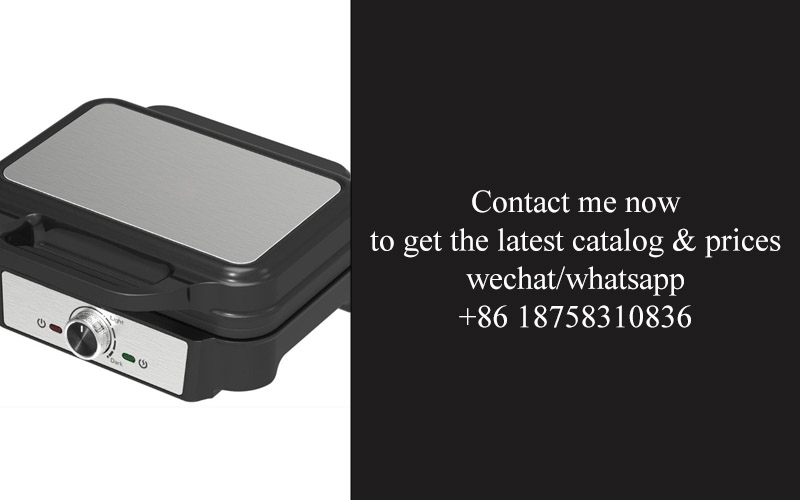
The non-stick surface has been a game-changer in kitchen appliances, and the waffle iron is no exception. However, with the rise of health concerns and environmental issues, the non-teflon waffle iron has emerged as a modern twist on this beloved appliance. Here’s how it stands out:
Materials have evolved, and so have our concerns about what we bring into our kitchens. Traditional Teflon-coated waffle irons have been a staple, but the non-teflon versions are crafted from various alternatives. These materials often include ceramic, silicone, and stainless steel, which are not only safe for cooking but also add a sleek, modern look to your kitchen.
Cooking with a non-teflon waffle iron means saying goodbye to the strong chemical smell that sometimes emanates from Teflon-coated surfaces. These eco-friendly options ensure that your waffles are cooked to perfection without any lingering odors. It’s a subtle but significant shift that many health-conscious consumers appreciate.
The non-teflon waffle irons are designed to be durable and long-lasting. While Teflon can sometimes wear down over time, materials like ceramic and silicone are known for their resilience. This means your waffle iron will stand the test of time, providing countless batches of delicious waffles without the need for frequent replacements.
Health is a major concern for many, and the non-teflon waffle iron addresses this by being free from harmful chemicals like PFOA and PTFE. These substances, often found in Teflon coatings, have been linked to potential health risks. With a non-teflon iron, you can cook with peace of mind, knowing that your waffles are safe to eat and your family is not exposed to potentially harmful substances.
Cooking times can vary, but the non-teflon waffle iron often provides a quicker cooking experience. Without the need for a chemical coating to prevent sticking, these waffle irons can heat up faster and maintain a consistent temperature, leading to evenly cooked waffles in less time.
Cleaning up after a waffle-making session is always a priority, and non-teflon waffle irons make it a breeze. The smooth, non-porous surfaces of materials like ceramic and silicone are easy to clean, and they don’t require the use of harsh chemicals or scrubbing. This not only saves time but also ensures that your appliance remains in top condition for years to come.
Modern kitchen appliances are increasingly designed with sustainability in mind, and the non-teflon waffle iron is a testament to this trend. By choosing a waffle iron made from eco-friendly materials, you’re not only investing in a safer appliance for your home but also contributing to a greener planet. The reduced environmental impact of these waffle irons is a compelling reason for many to make the switch.
Safety is paramount, and non-teflon waffle irons often come with features that enhance safety during use. For example, some models have cool-touch handles to prevent burns, and others include automatic shut-off functions to minimize the risk of accidents. These thoughtful design elements are a nod to modern safety standards and the need for peace of mind in the kitchen.
The non-teflon waffle iron has also embraced innovation. Many models come with adjustable temperature settings, allowing you to customize the waffle’s crispiness to your liking. Some even have features like non-slip bases and easy-to-clean surfaces, making them user-friendly and convenient.
In the world of kitchen gadgets, the non-teflon waffle iron is a shining example of how technology and health-consciousness can come together to create a product that’s both practical and beneficial. It’s a modern twist on a classic kitchen appliance, one that promises a healthier, safer, and more sustainable way to enjoy waffles.

The non-teflon waffle iron has gained quite the following, and for good reason. Here’s why more and more home cooks are opting for these modern appliances over their traditional teflon counterparts.
Environmental ConcernsTeflon, or polytetrafluoroethylene (PTFE), has been a staple in non-stick cookware for decades. However, it’s not without its critics. The problem arises when the surface of teflon-coated cookware is scratched or overheated, which can release toxic fumes. These fumes, known as PFOA and PFOS, are linked to various health issues. By choosing a non-teflon waffle iron, you’re making an eco-friendly choice that doesn’t contribute to the potential environmental and health risks associated with traditional non-stick coatings.
Healthier CookingThe health benefits of a non-teflon waffle iron are twofold. Firstly, you won’t have to worry about the potential release of harmful chemicals into your food. This means that each waffle you make is free from the risk of exposing your family to PFOA and PFOS. Secondly, non-teflon waffle irons are typically made with healthier materials like ceramic, which doesn’t require the use of chemical coatings to achieve a non-stick surface. This allows for healthier cooking with fewer artificial additives.
Longevity and DurabilityWhen it comes to the longevity of your waffle iron, a non-teflon model often has the edge. While teflon can be susceptible to scratches and wear, materials like ceramic are more robust. They don’t require the same delicate handling as teflon-coated surfaces, making them a more durable option for frequent use. This means your non-teflon waffle iron could very well outlast several teflon models, saving you money in the long run.
Versatility in CookingNon-teflon waffle irons aren’t just for waffles anymore. Many models are designed with interchangeable plates, allowing you to cook a variety of foods. You can make pancakes, omelets, and even small sandwiches. The ceramic or steel surfaces offer a versatile cooking surface that can handle different types of recipes without the risk of chemicals leaching into your food.
Safe for All CooktopsTeflon cookware is known for its compatibility with all cooktops, but that’s not always the case with non-teflon alternatives. However, modern non-teflon waffle irons are designed to be just as versatile. Whether you have a gas, electric, induction, or ceramic cooktop, you can find a non-teflon waffle iron that works with your setup. This ensures that you can enjoy your favorite waffles, regardless of the type of cooktop you have in your kitchen.
Easier CleaningWhile it’s a myth that teflon cookware is completely non-stick, it can sometimes require more elbow grease to clean. Non-teflon waffle irons, on the other hand, often maintain their non-stick qualities better over time. This means fewer burnt-on bits to scrape off and a quicker, easier cleaning process. The natural non-stick properties of ceramic and steel surfaces make cleanup a breeze, allowing you to spend more time enjoying your delicious creations and less time in the kitchen.
Stylish and CustomizableBeyond their functional benefits, non-teflon waffle irons are also a fashion statement. With a variety of designs, colors, and materials available, you can find a waffle iron that complements your kitchen’s aesthetic. Whether you prefer a sleek, modern look or something more rustic, there’s a non-teflon waffle iron out there that will add a touch of style to your cooking space. Plus, many come with removable plates for easy washing and even the possibility of custom designs or patterns.
Family-FriendlyChoosing a non-teflon waffle iron can be a family-friendly decision. With concerns over the health effects of teflon coatings, many parents are looking for safer alternatives. By investing in a non-teflon waffle iron, you’re creating a safer kitchen environment for your children, ensuring they’re not exposed to potentially harmful substances. Plus, the durability of non-teflon models means that they can withstand the rigors of family life, from young children’s spills to the occasional accidental drop.
Cost-EffectiveWhen you consider the potential health risks and the longevity of a non-teflon waffle iron, it becomes a cost-effective choice. While the initial cost may be slightly higher than that of a teflon waffle iron, the benefits far outweigh the extra expense. You’ll save money on replacing worn-out cookware, and you’ll avoid the hidden costs of medical care associated with the health risks of teflon. Over time, a non-teflon waffle iron can pay for itself in peace of mind and health savings.

Switching to a non-Teflon waffle iron can bring a host of advantages to your kitchen and culinary experience. Here’s a closer look at the benefits:
The Healthier OptionCooking with non-Teflon surfaces is a healthier choice for those who are conscious about their diet and the chemicals they consume. Traditional Teflon coatings contain PFOA (perfluorooctanoic acid) and PTFE (polytetrafluoroethylene), which can potentially release harmful fumes when overheated. Non-Teflon alternatives, on the other hand, are free from these chemicals, making them a safer option for you and your family.
Eco-Friendly ChoiceWith growing environmental concerns, opting for non-Teflon waffle irons aligns with a more sustainable lifestyle. The production of Teflon involves processes that can be harmful to the environment, including the release of toxic substances. By choosing a non-Teflon waffle iron, you’re not only reducing your exposure to potentially harmful chemicals but also supporting a greener planet.
Longevity of the Waffle IronNon-Teflon surfaces are often more durable than their Teflon counterparts. They tend to be more resistant to scratches and wear, which means your waffle iron can last longer without losing its non-stick properties. This longevity not only saves you money in the long run but also reduces the frequency of replacements, contributing to a more sustainable approach to kitchenware.
Versatility in CookingWhile Teflon is renowned for its non-stick qualities, non-Teflon waffle irons can offer similar benefits without the drawbacks. They can be used to cook a variety of foods, not just waffles. From pancakes to eggs, these irons can handle a range of recipes, making them a versatile addition to any kitchen.
Enhanced Taste and TextureSome cooks believe that Teflon can affect the taste and texture of the food being cooked. Non-Teflon waffle irons, on the other hand, may provide a more authentic flavor and a better texture, as they don’t alter the food’s natural properties. This can be particularly appealing to those who enjoy the distinct taste and feel of freshly cooked waffles.
Safe for All Kinds of CookwareIf you have concerns about using metal spatulas or other cookware on your waffle iron, non-Teflon models can be a game-changer. They are typically more forgiving to metal utensils, reducing the risk of damaging the surface and maintaining the non-stick properties for longer.
Customizable Cooking ExperienceNon-Teflon waffle irons often come with various features that allow for a customizable cooking experience. From adjustable heat settings to different shapes and sizes of waffle grids, these irons can cater to your specific preferences and dietary needs.
Ease of CleaningWhile Teflon is known for its ease of cleaning, non-Teflon surfaces can also be quite simple to maintain. The absence of potentially harmful chemicals means that you can clean these waffle irons with a variety of cleaning agents, including harsher ones like steel wool, without worrying about damaging the surface.
Increased Confidence in CookingUsing a non-Teflon waffle iron can give you peace of mind, knowing that you’re not exposing your family to potentially harmful substances. This can lead to increased confidence in cooking, as you’re more likely to experiment with new recipes and flavors without the fear of chemical contamination.
Cost-Effective in the Long RunAlthough non-Teflon waffle irons may have a higher upfront cost, they can be more cost-effective in the long term. Their durability and the fact that they often require less maintenance can save you money on replacements and repairs.
In conclusion, the benefits of choosing a non-Teflon waffle iron are numerous. From health and environmental considerations to longevity and versatility, these irons offer a compelling alternative to traditional Teflon-coated models. Whether you’re a health-conscious consumer or simply looking for a durable, eco-friendly kitchen gadget, a non-Teflon waffle iron might just be the perfect addition to your culinary arsenal.

In the quest for the perfect waffle iron, it’s not just about making delicious waffles; it’s about choosing a tool that aligns with your values and lifestyle. Here are some top features to consider when looking for a non-teflon waffle iron:
Material Matters: The material of the waffle iron’s plates is crucial. Opt for non-toxic, durable materials like cast aluminum or stainless steel. These materials not only ensure even heating but also stand the test of time without the risk of harmful chemicals leaching into your food.
Easy to Clean: Non-teflon waffle irons can sometimes be more challenging to clean due to their non-stick surfaces. Look for models with a design that allows for easy release of the waffles and a surface that’s easy to wipe down or wash. Some irons come with removable plates for a thorough cleaning.
Even Heating: A non-teflon waffle iron should distribute heat evenly across the surface to ensure consistent waffle batter cooking. Check for features like even heat distribution technology or a heavy-duty construction that promises uniform cooking.
Versatility: While you’re primarily buying a waffle iron, some models offer versatility beyond just making waffles. Look for irons that can also cook pancakes, sandwiches, or even serve as a grill for vegetables or cheese. This added functionality can make your waffle iron a staple in your kitchen.
Size and Shape: Consider the size and shape of the waffle iron. Do you want traditional Belgian waffles or something smaller and more portable? Some non-teflon waffle irons come in various shapes and sizes, so choose one that fits your needs and storage space.
Non-Stick Coating Alternatives: Since you’re avoiding teflon, it’s important to find a non-stick alternative. Some irons use ceramic coatings, which are known for their non-reactive and non-toxic properties. These coatings are also more durable than teflon and can withstand higher temperatures.
Indicator Lights: A simple indicator light can be a game-changer. It lets you know when the iron is preheated and ready to cook, ensuring your waffles are perfectly golden and crispy.
Safety Features: Look for safety features like cool-touch handles and an automatic shut-off function. These features prevent accidents and ensure that your waffle iron is safe to use, especially if you have children or pets.
Warranty: A good warranty can give you peace of mind. Manufacturers who stand behind their products often offer a warranty that covers defects or malfunctions, which is particularly reassuring when investing in a non-teflon waffle iron.
Price Point: While non-teflon waffle irons can be more expensive due to their materials and construction, they are not always out of reach. Set a budget and look for the best quality within that range. Sometimes, you can find great deals on second-hand or clearance items.
User Reviews: Before making a purchase, read user reviews. They can provide insights into the real-life performance of the waffle iron, including how well it holds up over time and how easy it is to use.
Eco-Friendly: If sustainability is a concern, choose a waffle iron that is made with eco-friendly materials and practices. Some brands are committed to reducing their carbon footprint and using recycled materials.
By focusing on these features, you can find a non-teflon waffle iron that not only meets your culinary needs but also aligns with your values and preferences. Remember, the right waffle iron can be a delightful addition to your kitchen, bringing joy to your mornings with perfectly crafted waffles.
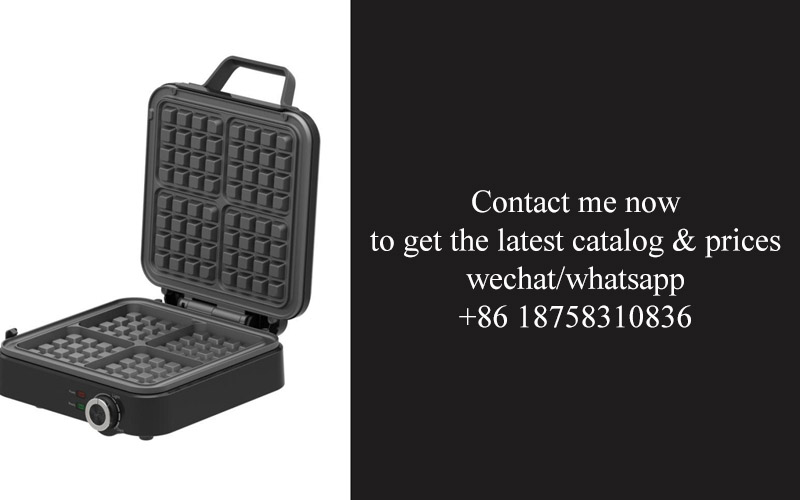
Preheat the iron: Before you start, ensure your non-teflon waffle iron is preheated. Most models have a light or indicator that tells you when it’s ready. This step is crucial for even cooking and a perfect waffle texture.
Prepare the batter: Mix your waffle batter according to the recipe you prefer. Whether it’s a classic Belgian waffle mix or a homemade recipe, make sure it’s smooth and free of lumps. This consistency is key for a waffle that cooks evenly.
Grease the iron: While the iron is heating, lightly grease the plates with a non-stick cooking spray or a small amount of butter. This prevents the batter from sticking and ensures your waffles come out beautifully.
Pour the batter: Once the iron is preheated and the plates are greased, pour the batter onto the center of one plate. The amount you use will depend on your iron’s size and the thickness you prefer. Be mindful not to overfill, as this can cause the batter to spread too much and cook unevenly.
Close the iron: Carefully close the lid, ensuring the plates are sealed properly. The heat will activate the iron’s plates, and the batter will start to cook. Wait for the indicator light to turn off or for the waffle to turn golden brown, which usually takes about 3-4 minutes.
Check for doneness: To check if the waffle is done, lift the lid slightly. If the waffle is golden brown and crispy on the outside, it’s ready to be removed. If it’s still pale, give it a few more minutes.
Remove the waffle: Use a spatula to carefully lift the waffle from the iron. Be gentle, as it might be hot and fragile. Place it on a wire rack or a plate to cool down.
Repeat the process: If you’re making multiple waffles, repeat the greasing, pouring, and cooking steps for each one. The iron should stay hot enough to cook the batter without additional preheating.
Cooling: Allow the waffles to cool for a few minutes before serving. This helps them to set and makes them easier to cut or fold.
Serve immediately: Once the waffles have cooled slightly, serve them warm. They’re best enjoyed fresh out of the iron, with your favorite toppings like syrup, fruit, nuts, or whipped cream.
Storage: If you have any leftover waffles, store them in an airtight container. They can be reheated in the microwave or oven, but they might not be as crispy as when they were freshly cooked.
Safety tips: Always keep the iron on a stable surface while in use. Avoid using it on surfaces that can overheat or cause fires. Never leave the iron unattended while it’s plugged in and hot. And remember, the plates can become very hot, so use oven mitts or a thick towel when handling the iron.
Enjoying your non-teflon waffle iron: With these simple steps, you can enjoy delicious, homemade waffles without the worry of teflon coating. The non-teflon surface might require a bit more attention to maintenance, but the health benefits and the satisfaction of cooking your waffles are well worth it. Happy waffle-making!
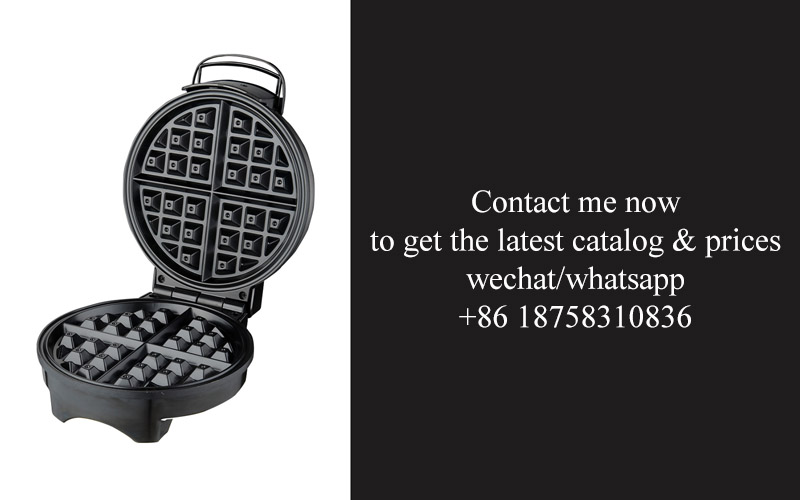
Cleaning and maintaining your non-Teflon waffle iron is essential for its longevity and performance. Here are some tips to keep your appliance in tip-top shape:
Avoid using harsh chemicals or abrasive pads. These can damage the surface of the iron and potentially affect the non-stick properties. Stick to gentle cleaning agents and soft materials.
After each use, allow your waffle iron to cool down completely before cleaning. This ensures that you’re not working with a hot surface and minimizes the risk of burns.
When it comes to cleaning the surface, a simple damp cloth often does the trick. Wipe away any residue or spills while the iron is still warm, but not hot to the touch. This can prevent sticky substances from hardening and becoming more difficult to remove.
If you find that there are some stubborn bits of food or batter stuck to the iron, you can use a non-abrasive sponge or a plastic scraper. Be gentle to avoid scratching the surface.
For a deeper clean, fill the waffle iron with warm water and add a small amount of mild dish soap. Close the lid and let it sit for a few minutes. This soak can help loosen any baked-on food particles. After soaking, open the lid and gently scrub the surface with a non-abrasive sponge. Rinse thoroughly with warm water.
When cleaning the exterior, use a damp cloth to wipe away any grease or grime. If needed, you can use a mild detergent or all-purpose cleaner. Avoid getting water on the electrical components or the plug, as this can lead to malfunctions.
Regularly check the hinge and locking mechanisms of your waffle iron. Over time, these can become stiff or clogged with food particles. Gently wipe them down with a damp cloth, and if necessary, apply a small amount of lubricant to keep them moving smoothly.
Never submerge your non-Teflon waffle iron in water. The electrical components are not waterproof, and this can cause serious damage. If the iron has a removable drip tray, you can wash it in the sink with warm, soapy water, but make sure it’s completely dry before reattaching it to the iron.
To prevent rust, especially if you live in a humid climate or store your waffle iron in a damp area, make sure it’s completely dry after each use. You can place a small towel under the iron to absorb any excess moisture.
When storing your waffle iron, keep it in a cool, dry place. If you’re storing it for an extended period, consider using a protective cover to shield it from dust and potential damage.
Remember that the longevity of your non-Teflon waffle iron depends on how well you care for it. By following these maintenance and cleaning tips, you can ensure that your waffle iron continues to deliver delicious, perfectly crisp waffles for years to come.
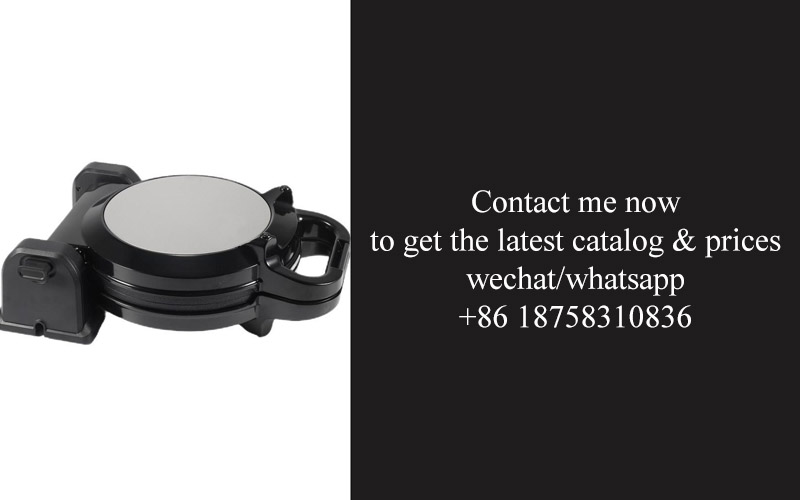
I’ve recently come across some fascinating customer reviews and testimonials for non-Teflon waffle irons. Here’s a glimpse into what real users are saying:
“I was skeptical at first, but the non-Teflon waffle iron has completely changed my morning routine. No more greasy waffles, and the clean-up is a breeze!”
“I’ve tried several non-stick cookware items, but this waffle iron is by far the best. It heats up quickly and the waffles come out perfectly every time.”
“I bought this waffle iron for my health-conscious friend, and she loves it. The fact that it’s non-Teflon means she can enjoy her favorite breakfast without worrying about chemicals.”
Several customers have mentioned the durability of these waffle irons:
“The build quality is impressive. My non-Teflon waffle iron has been through a lot, and it’s still going strong.”
“I’ve had my waffle iron for over a year now, and it’s showing no signs of wear. It’s definitely a worthwhile investment.”
Users have also highlighted the ease of use:
“The instructions were clear, and it was easy to figure out how to use the waffle iron. Even my kids can make waffles now!”
“I love how simple it is to adjust the temperature. No more burnt waffles or undercooked ones.”
Safety and health concerns have been a major factor for many buyers:
“I was worried about the potential health risks of Teflon, so I switched to a non-Teflon waffle iron. I feel much better knowing that my family isn’t exposed to harmful chemicals.”
“Some of my friends have had issues with their Teflon waffle irons peeling and releasing harmful fumes. This non-Teflon option has given me peace of mind.”
The versatility of these waffle irons has also been praised:
“Not only do I use it for waffles, but I’ve also tried making pancakes and even grilled cheese sandwiches on it. It’s a versatile appliance that I can’t live without.”
“I was surprised to find out how many different types of foods you can cook on a non-Teflon waffle iron. It’s become a staple in my kitchen.”
Lastly, the value for money has been a common theme in the testimonials:
“I thought I was spending a lot on this waffle iron, but it’s been worth every penny. It’s lasted longer than I expected and has made countless delicious waffles.”
“I was hesitant to spend so much on a waffle iron, but it’s been a great investment. It’s paid for itself in the convenience and quality of the waffles it produces.”
These reviews and testimonials paint a picture of a product that not only meets but exceeds customer expectations. The non-Teflon waffle iron seems to be a game-changer for many, offering a healthier, more durable, and versatile option for those looking to enjoy their favorite breakfast treats.
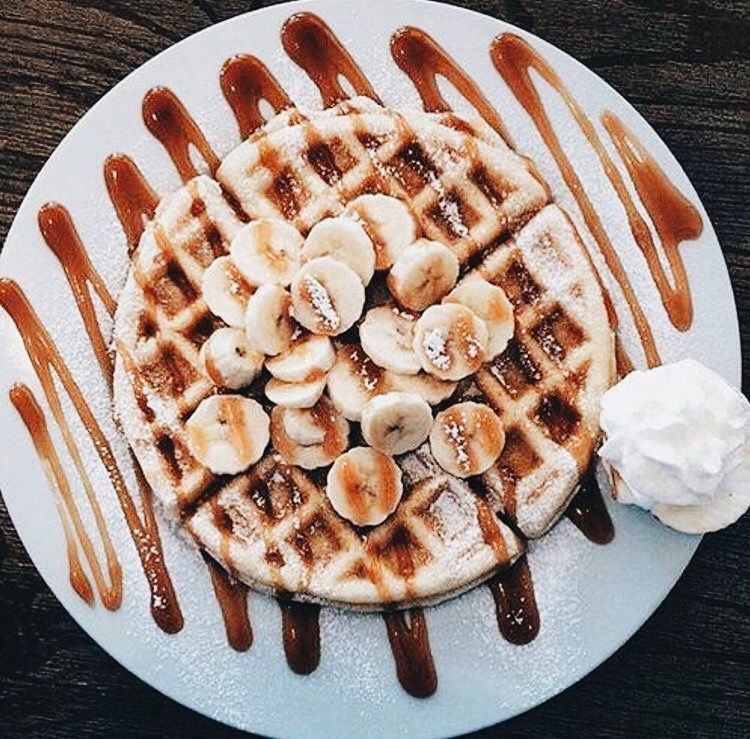
The non-teflon waffle iron has emerged as a healthier and more sustainable option for waffle enthusiasts. Here’s why it’s a choice that waffle lovers should consider.
Healthier Cooking ExperienceCooking with a non-teflon waffle iron means avoiding the potential health risks associated with Teflon. Non-teflon surfaces are free from harmful chemicals like PFOA and PTFE, which can leach into food at high temperatures. This choice ensures that your waffles are not only delicious but also safe for consumption.
Diverse Surface PatternsNon-teflon waffle irons come in a variety of surface patterns, from classic squares to intricate designs. This allows for a unique visual appeal and texture in each waffle. Whether you’re looking for a rustic charm or a modern twist, these irons offer endless possibilities for customization.
Longevity and DurabilityCompared to their teflon counterparts, non-teflon waffle irons are often made from materials like cast iron or ceramic, which are known for their longevity and durability. These materials can withstand the test of time and frequent use, making them a wise investment for those who love their waffles.
Ease of CleaningWhile non-teflon surfaces might seem like they would be more challenging to clean, many users find that they are surprisingly easy to maintain. The natural non-stick properties of materials like cast iron and ceramic often mean that food releases more easily, reducing the need for scrubbing.
Eco-Friendly OptionChoosing a non-teflon waffle iron is an eco-friendly decision. Teflon-coated products are not biodegradable and can take hundreds of years to decompose. In contrast, the materials used in non-teflon waffle irons are more sustainable and contribute less to environmental pollution.
Versatile Cooking CapabilitiesNon-teflon waffle irons aren’t just for waffles. Many users have found creative ways to use these irons to cook other foods, such as pancakes, sandwiches, and even crispy vegetables. The versatility of these irons can add a new dimension to your kitchen adventures.
No Odor ConcernsOne common issue with teflon-coated waffle irons is the off-gassing of a chemical odor when heated. Non-teflon irons, on the other hand, do not have this problem, providing a cleaner and more pleasant cooking experience.
Customization and PersonalizationNon-teflon waffle irons often come in various colors and finishes, allowing you to match your kitchen decor or express your personal style. This level of customization can be a delightful addition to any kitchen.
No Risk of Damage from Food ScratchesTeflon surfaces can be damaged by metal utensils, leading to a loss of non-stick properties. Non-teflon waffle irons, being made of materials like cast iron or ceramic, are more resistant to scratches and can withstand the occasional scrape from a metal spatula.
Cooking for Health-Conscious FamiliesFor families looking to eat healthier, non-teflon waffle irons offer a guilt-free option. Parents can feel confident serving waffles without worrying about the potential health risks associated with Teflon.
Affordable AlternativesSurprisingly, non-teflon waffle irons can be quite affordable, making them an accessible choice for those looking to make a healthier switch in their kitchen. They offer great value without compromising on quality or performance.
Ease of SeasoningFor those who prefer the taste and non-stick properties of seasoned cast iron, non-teflon waffle irons can be seasoned just like traditional cast iron skillets. This process creates a natural, non-toxic non-stick surface that is safe for cooking.
The non-teflon waffle iron is more than just a kitchen gadget; it’s a symbol of health, sustainability, and culinary creativity. Whether you’re a waffle aficionado or simply looking to improve your cooking experience, this versatile and eco-friendly tool is a healthy choice for waffle lovers everywhere.